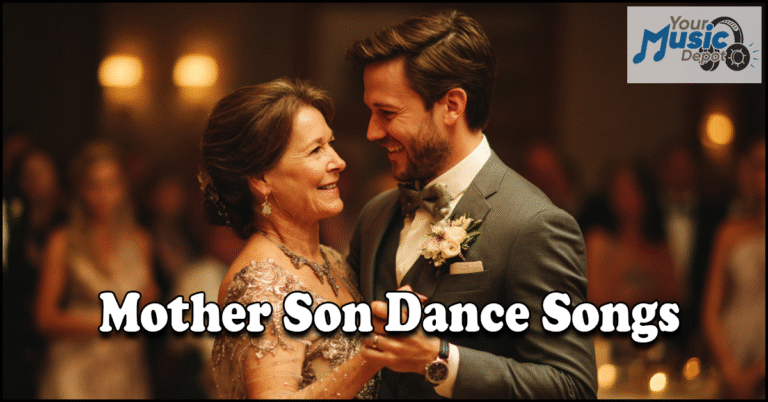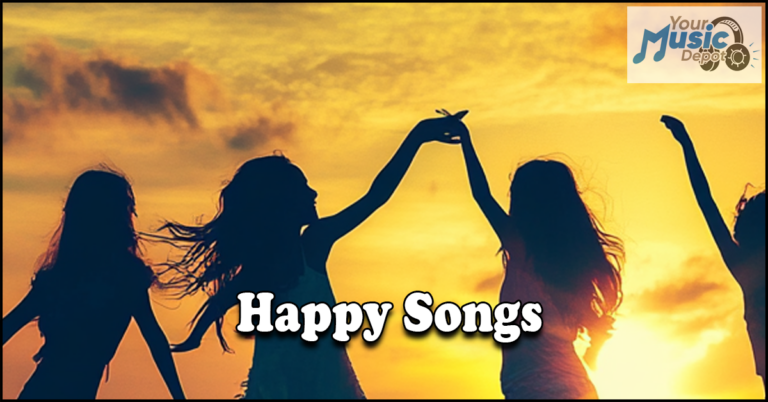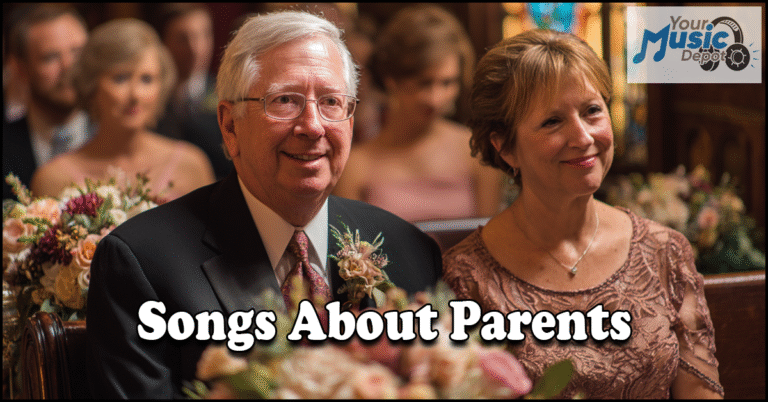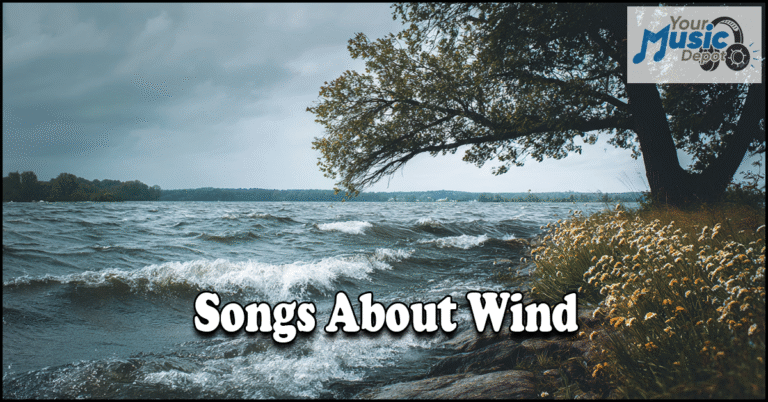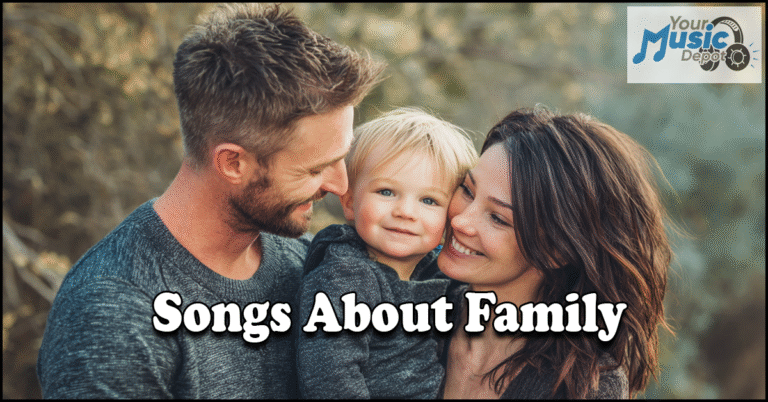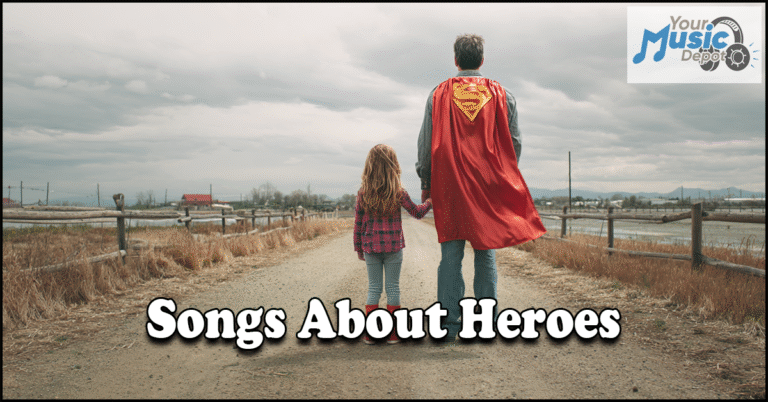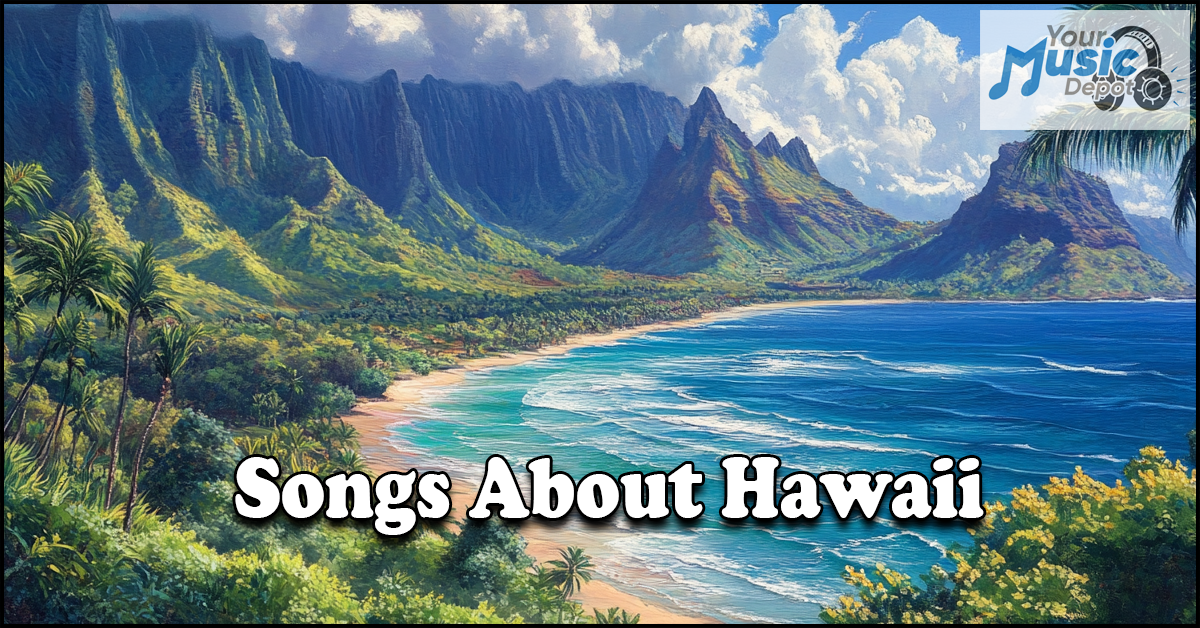
Hawaii’s music is special because of its beautiful setting. Bruno Mars said, “Hawaii is paradise. It might be cheesy to say it, but there’s music in the air there.”
The islands have a mix of sounds, like palm trees and ukuleles at luaus.
The Big Island’s different climates add to its music. Your Music Depot loves the Songs About Hawaii, Hawaiian music, tropical songs, and island melodies that touch people’s hearts.
Classic songs like Bing Crosby’s “My Isle of Golden Dreams” are part of Hawaii’s music. Harry Belafonte’s “Banana Boat (Day-O)” brings fun rhythms. These Hawaiian music pieces take listeners to the Pacific’s beauty.
Perry Como’s “Papa Loves Mambo” and the Andrews Sisters‘ “Rum and Coca Cola” bring a sense of escape. These Songs About Hawaii make us dream and wonder.
Best Songs About Hawaii
Hawaii’s breathtaking landscapes, rich culture, and serene atmosphere have inspired some of the most memorable songs in music history.
Tracks like “Aloha ʻOe” by Queen Liliʻuokalani capture the heartfelt longing and beauty of the islands, with its timeless melody becoming an enduring symbol of Hawaiian heritage.
Songs that Capture Hawaii’s Beauty and Spirit
- Israel Kamakawiwoʻole – Hawaiʻi ’78
- Elvis Presley – Blue Hawaii
- Don Ho – Tiny Bubbles
- Bing Crosby – Sweet Leilani
- The Beach Boys – Hawaii
- The Ventures – Hawaii Five-O
- Kealiʻi Reichel – Kawaipunahele
- Gabby Pahinui – Hiʻilawe
- Alfred Apaka – Aloha ʻOe
- Jack Johnson – Only the Ocean
- Hapa – Lei Pikake
- Brothers Cazimero – Home in the Islands
- Dennis Pavao – Ka Nohona Pili Kai
- Amy Hānaialiʻi Gilliom – Haleiwa Hula
- Makaha Sons – Take a Walk in the Country
- Cecilio & Kapono – Honolulu City Lights
- Olomana – Kuʻu Home O Kahaluʻu
- Peter Moon Band – Island Love
- Na Leo Pilimehana – I Miss You, My Hawaii
- Kaʻau Crater Boys – Surf
- Kaleo – Way Down We Go (Hawaii Five-0 soundtrack version)
- Jake Shimabukuro – Waikiki Hula
- Iz – Island Style
- Kainani Kahaunaele – Nā Pua O Ka ʻĀina
- Willie K – You Kuʻuipo
- Amy Hanaialiʻi – Pālehua
- Kapena – Masese
- John Cruz – Island Style
- Keola Beamer – Honolulu City Lights
- Ledward Kaapana – Radio Hula
- Kuana Torres Kahele – Nā Vaqueros
Elvis Presley’s “Blue Hawaii” paints a dreamy picture of swaying palms and ocean breezes, encapsulating the romantic allure of island life.
Meanwhile, Israel Kamakawiwoʻole’s medley of “Somewhere Over the Rainbow/What a Wonderful World” evokes a profound sense of connection to nature, transporting listeners to a place of peace and simplicity.
Classic Hawaiian Songs
- Queen Liliʻuokalani – Aloha ʻOe
- The Sunday Manoa – Kawika
- Genoa Keawe – Alika
- The Brothers Cazimero – Waika
- Moe Keale – Pua Lilia
- Dennis Kamakahi – Kokeʻe
- The Makaha Sons of Niʻihau – Ke Alaula
Hawaiian Contemporary / Island Reggae / Jawaiian
- Kolohe Kai – Ehu Girl
- Maoli – Write Me a Letter
- The Green – Love I
- Rebel Souljahz – Nothing to Hide
These songs not only celebrate Hawaii’s natural beauty but also share its spirit of aloha with the world, making them a perfect soundtrack for paradise.
The Musical Soul of Hawaiian Paradise
Hawaii’s music is a mix of old island tunes, spiritual songs, and new takes on paradise songs.
This place has inspired many musicians. It has won hearts around the world with its beautiful sounds and deep feelings.
Traditional Island Rhythms and Melodies
Before outsiders came, Hawaiian music was all about chant-songs and hula dances. These were tied to the islands’ history and culture.
The royal family of Hawaii, like Prince Leleiohoku and Queen Lili’uokalani, wrote songs that are still loved today.
The Spiritual Connection in Hawaiian Music
Hawaiian music is about worshiping gods like Kane, Ku, Lono, and Kanaloa. It shows the islands’ deep bond with nature. This connection makes Hawaiian music powerful and moving.
Modern Interpretations of Paradise Songs
Even though island melodies have changed, the spirit of paradise songs stays the same. Today’s artists mix old and new sounds.
They use instruments like the slack-key guitar and ukulele to share Hawaiian music with the world.
“The slack-key guitar, a unique Hawaiian style, gained worldwide recognition only in the 1970s.”
Songs About Hawaii Through the Ages
The story of Songs About Hawaii is long and colorful. It mixes the island’s Hawaiian music history with tropical songs. From old Polynesian chants to today’s hits, these songs show how Hawaii has changed over time.
When Captain James Cook arrived in 1778, it changed Hawaii’s music forever. Then, when Hawaii became part of the U.S. in 1898, and later a state in 1959, music got even more interesting. It mixed American sounds with traditional Hawaiian tunes.
Some songs are truly timeless. Like “Aloha ‘Oe” by Queen Lili’uokalani, written in 1878. It’s now a symbol of Hawaii. Gabby Pahinui made “Hi’ilawe” famous, and Keola Beamer’s “Honolulu City Lights” from 1978 still charms listeners today.
Composers like Kui Lee and Jerry Santos have made big marks on Hawaiian music history. Their songs, like “Ku’u Home o Kahalu’u” by Jerry Santos in 1976, tell stories of Hawaii’s past. These tropical songs are more than just music; they share Hawaii’s history and feelings.
Today, Songs About Hawaii still enchant people everywhere. They take listeners to the magical world of Hawaii. And they help keep Hawaii’s musical heritage alive.
The Cultural Significance of Luau Music and Hula Songs
Luau music and hula songs are key to Hawaii’s culture. They have been shared for many years. These traditions keep alive the islands’ old chants, ceremonies, and stories.
Traditional Hawaiian instruments and hula dancers bring this music to life. It connects the land, people, and the divine in a special way.
Ancient Chants and Ceremonies
Before Western times, Hawaiian chants and ceremonies were very important. They were tied to the kapu system and honoring Hawaiian gods.
These rituals, with traditional music, were crucial to the islands’ spiritual and social life.
The near-extinction of the Hawaiian language made these musical traditions even more vital. They helped keep the Kānaka Maoli culture alive.
The Role of Music in Hawaiian Storytelling
Music is a big part of Hawaiian storytelling. It tells the islands’ history and legendary stories. Chants and songs take listeners to the heart of Hawaiian life.
The article shows how music keeps communities like Kānaka Maoli connected to their culture and history. They are still fighting for their rights to their land in Hawaiʻi.
Contemporary Luau Entertainment
Today’s luaus offer a deep dive into Hawaiian culture. They feature Polynesian dinner shows with hula dancing and chanting. You’ll hear the ukulele and guitar too.
These events are a feast for the eyes and ears. They also let guests try cultural activities like lei making and traditional fishing. Luaus mix old Hawaiian traditions with new entertainment, showing the islands’ rich cultural heritage.
“Luaus serve as opportunities for locals and visitors to connect with Hawaiian values, traditions, and history, fostering an appreciation for Hawaii’s unique cultural legacy.”
Iconic Instruments of Hawaiian Music
Hawaiian music is known for its special instruments. These instruments make the tropical rhythms of the islands famous. The ukulele is the most famous, with its soft sounds and fun rhythms.
Other famous instruments include the steel guitar and the slack key guitar. The steel guitar has a special slide sound.
The slack key guitar uses a special tuning from Spanish and Mexican cowboys. Together with drums and other sounds, they make the music of Hawaii.
| Instrument | Description |
|---|---|
| Ukulele | The most iconic Hawaiian instrument, with its distinctive four strings and lively strumming patterns. |
| Steel Guitar | A unique guitar played with a steel bar, creating a sublime sliding sound that is essential to Hawaiian music. |
| Slack Key Guitar | An open chord guitar technique that originated from Spanish and Mexican cowboys, contributing to the traditional Hawaiian sound. |
| Percussion Instruments | Various drums, gourds, and other percussion elements that add depth and rhythm to the tropical soundscape. |
These Hawaiian instruments come together to make the tropical rhythms we love. From the ukulele‘s soft sounds to the steel guitar’s slide, each one is important. They all help make Hawaiian music special.
“The ukulele is the heart and soul of Hawaiian music, capturing the spirit of the islands in its every note.”
Famous Hawaiian Musicians and Their Legacy
Hawaii has a rich music scene. Many musicians have made a big impact. They have shaped island music and its cultural value.
Local Legends and Their Influence
The Hawaiian Music Hall of Fame was started in 1994. It honors Hawaiian music and hula. Famous figures like King David Kalakaua and Queen Liliuokalani were big composers.
King Kalakaua wrote “Hawaii Ponoi,” the state song. Queen Liliuokalani wrote “Aloha ‘Oe,” a favorite song. Groups like the Makaha Sons of Ni’ihau and the Brothers Cazimero have also made a mark.
Slack-key guitar master Ledward Kaapana and Israel Kamakawiwo’ole, known as “Bruddah Iz,” are legends. They inspire musicians everywhere.
Mainstream Artists Inspired by Hawaii
Hawaiian music has attracted many artists. Pop star Bruno Mars has sold over 130 million records. He has mixed island music into his hits.
Jack Johnson also draws from Hawaiian roots. His song “Flake” from “Brushfire Fairytales” is a hit.
Notable Hawaiian Music Collections
Many collections help share Hawaiian music. The Hawaiian Music Hall of Fame has songbooks and publications. These collections show the richness of Hawaiian music.
The Reader’s Digest 1970 Hawaiian Paradise set introduced Hawaiian sounds to more people. It’s helped spread the music’s charm.
| Notable Hawaiian Musicians | Contributions and Legacies |
|---|---|
| Israel Kamakawiwo’ole | Advocacy for Hawaiian cultural and environmental issues; iconic cover of “Somewhere Over the Rainbow/What a Wonderful World” |
| Ledward Kaapana | Slack-key guitar master; collaborations with various musicians and the popular band Hui ‘Ohana |
| Bruno Mars | Global pop superstar who has incorporated elements of Hawaiian music into his hit songs |
| Don Ho | Breakthrough album “Tiny Bubbles” and hit single of the same name |
| Yvonne Elliman | Breakout hit “If I Can’t Have You” featured on the “Saturday Night Fever” soundtrack |
“Music has always been a way for the Hawaiian people to express their culture, identity, and resistance against colonization.”
Beach Music and Tropical Rhythms of the Islands
The beaches of Hawaii are perfect for music. The sound of waves and palm trees mixes with local sounds. This mix makes the music special.
In Japan, 85% love traditional music. Australia sees more people at beach music festivals every year. Taiwan loves Hawaiian music more now than before.
Indonesia loves Pacific Island music the most. Fiji’s tourism grew because of beach music. This helps the local economy a lot.
| Region | Album Distribution |
|---|---|
| Africa, Middle East, and India | Ghana, Egypt, India, Kenya, Lebanon, Nigeria, Saudi Arabia, South Africa, Sri Lanka, United Arab Emirates |
| Asia Pacific | Australia, China, Japan, Malaysia, Philippines, Singapore, Taiwan, Thailand, Vietnam |
| Europe | France, Germany, Spain, United Kingdom, Ukraine, Italy, Russia, Switzerland |
| Latin America and the Caribbean | Argentina, Brazil, Jamaica, Mexico, Panama, Peru, Venezuela |
| United States and Canada | – |
Hawaii’s music is special because of its mix. Traditional Hawaiian music uses the ukulele and slack-key guitar. It also includes chants that connect people spiritually.
Modern Hawaiian music adds jazz, reggae, and rock. Bands like Makaha Sons and Hapa mix old and new sounds. This music is loved all over the world.
“The beaches and coastal areas of Hawaii provide a natural backdrop for the islands’ captivating music, where the sounds of lapping waves, swaying palm trees, and local wildlife contribute to the irresistible tropical rhythms that inspire musicians across the Pacific region.”
The Evolution of Polynesian Tunes in Modern Hawaii
Hawaii’s music scene is always changing. It mixes old Polynesian tunes with new sounds. The islands’ early settlers, who came around A.D. 300, left a big mark on today’s music.
The Big Island’s different climates and cultures have created many musical styles. You can hear everything from ancient chants to new sounds that mix global music with a Hawaiian twist.
The first Hawaiian recordings were made in 1906 by the Victor Talking Machine Company. They made 53 recordings that year. Later, Puerto Rican immigrants brought Cachi Cachi music, adding to the mix.
From 1915 to 1930, Hawaiian music became popular all over the world. It was a big time for the genre.
In the 1960s, Hawaiian music’s popularity went down. Rock, soul, and pop from the mainland became more popular. But the music didn’t stop evolving.
Today, artists like Israel Kamakawiwo’ole and Keali’i Reichel are famous. Kamakawiwo’ole’s “Facing Future” album is the best-selling Hawaiian album ever.
The ’90s saw a comeback of Hawaiian stars like Amy Hanaiali’i Gilliom and Willie K.
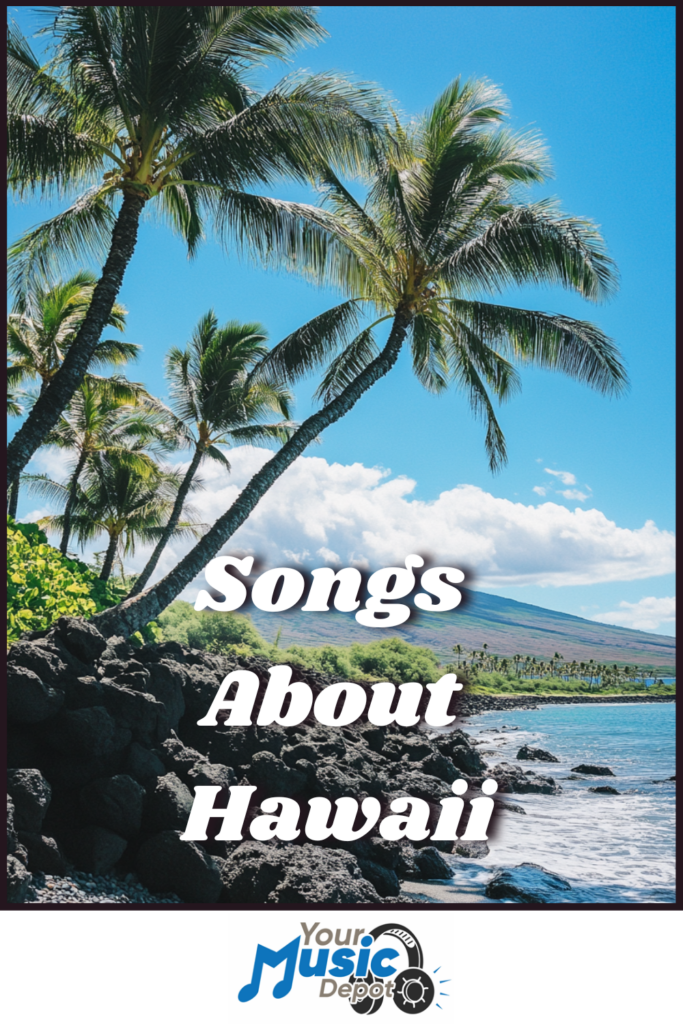
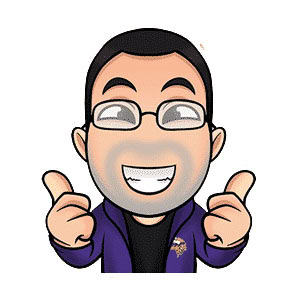
Ryan Conlon is the owner and author of Your Music Depot, a go-to platform for music enthusiasts seeking curated song lists and artist insights.
Passionate about the intersection of music and storytelling, Ryan’s goal is to help people find the perfect song for every occasion, exploring how songs can capture emotions and memories.
Subscribe to Our Newsletter

